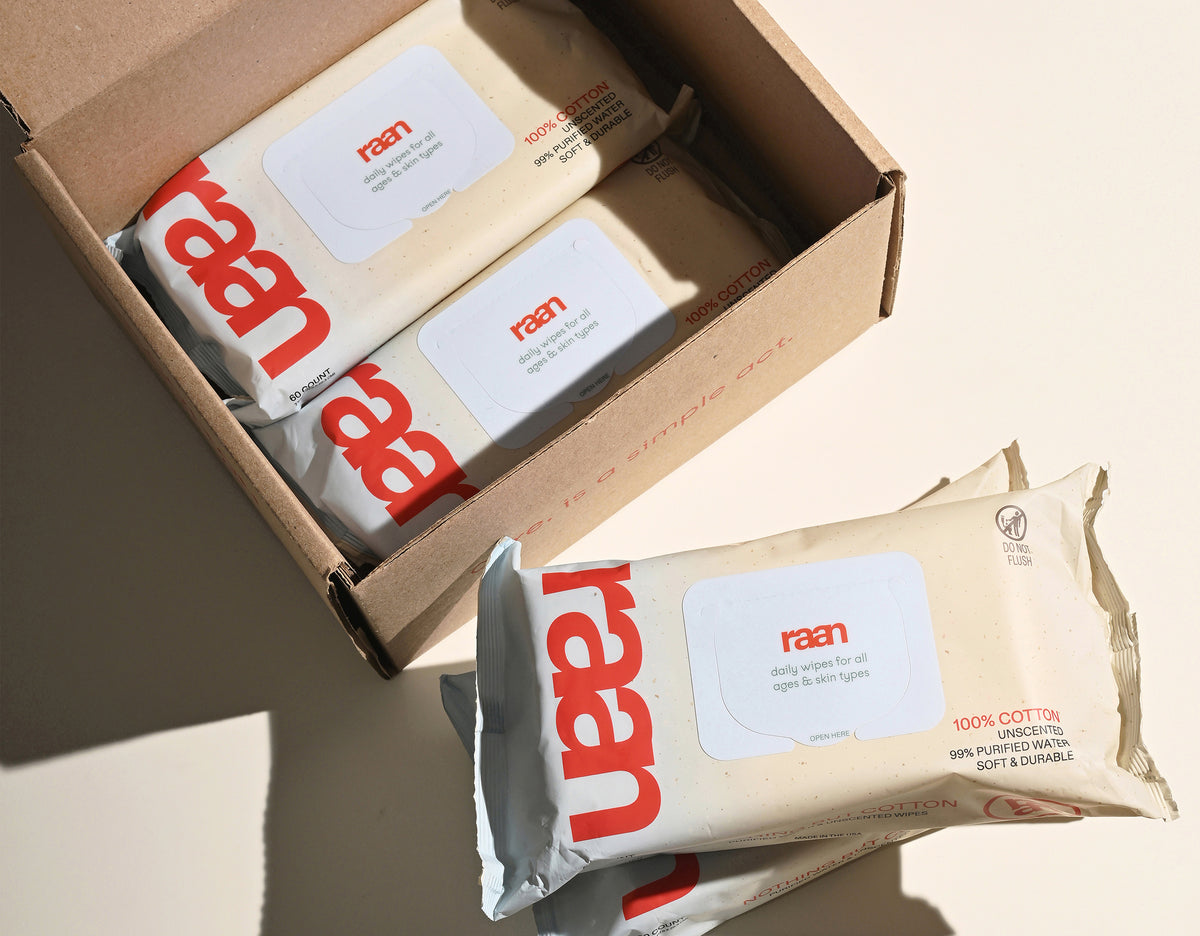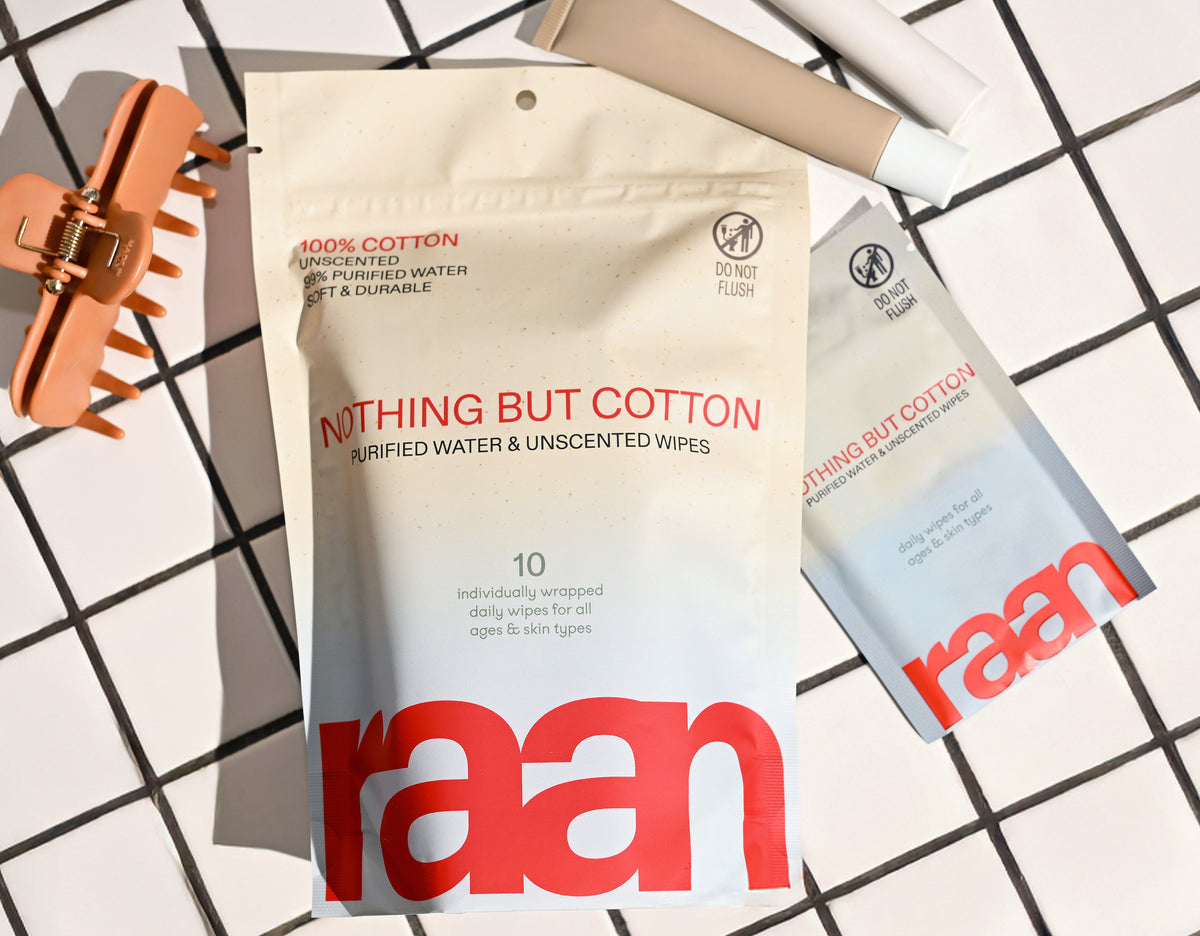Key Takeaways
- Wet Ones wipes are popular cleaning wipes designed for quick sanitizing and mess cleanup.
- They often claim to kill 99.99% of germs and come in various convenient formats.
- Many Wet Ones wipes use synthetic fibers and multiple chemical additives.
- The antibacterial agents in these wipes can cause irritation for sensitive skin.
- There are simpler, more natural alternatives available to Wet Ones wipes.
Table of Contents
- What Are Wet Ones Wipes, And How Do They Stack Up Against Simple, Honest Alternatives?
- Everyday Uses for Wet Ones Wipes and Modern Sensitive-Skin Needs
- What's Actually Inside? Ingredients, Materials & Safety Science Explained
- Choosing the Right Wipe For You, Scent, Sensitivity & Sustainability
- Keeping Wipes Fresh, Safe, and Functional, Storage, Expiry & Responsible Disposal
- Summary, Empowered Choices for Real-World Messes
What Are Wet Ones Wipes, And How Do They Stack Up Against Simple, Honest Alternatives?
Wet ones wipes are mass-market cleaning wipes designed for quick sanitizing and mess cleanup. Most feature antibacterial claims of 99.99% germ-killing power and come in various formats, travel packs, canisters, and single-use packets. The catch? Many rely on synthetic fibers, multiple chemical additives, and antibacterial agents that can irritate sensitive skin.
We take a different approach. Our wipes use unbleached, 100% cotton with just five EWG-verified ingredients, no plastic fibers, synthetic preservatives, or harsh chemicals. It's the difference between over-engineering and trusting what already works.
If you're looking for a convenient, on-the-go solution, try our individually wrapped cotton wipes for sensitive skin. For more information on how Wet Ones compare to other brands, see our in-depth Wet Ones blog review.
Everyday Uses for Wet Ones Wipes and Modern Sensitive-Skin Needs

Wet ones wipes handle the real-world messes we all face: sticky hands after lunch, quick face refreshes post-workout, diaper changes, and cleaning up after touching public surfaces. They're built for busy lives that don't pause for proper handwashing.
For best results, apply to hands for at least 15 seconds, use gentle motions on faces, and avoid open wounds or cuts. The key is choosing wipes that match your skin's needs, especially if you're dealing with sensitivity or caring for a newborn.
For families who want a ready-for-anything option, check out the mess-ready pack for all your daily cleaning needs.
Not Just for Hands, 5 Less-Obvious Uses:
- Wiping down smartphone screens
- Cleaning shopping cart handles
- Quick car dashboard refresh
- Removing makeup smudges
- Freshening up before meetings
What's Actually Inside? Ingredients, Materials & Safety Science Explained
Most wet ones wipes contain benzalkonium chloride (the antibacterial agent), synthetic fragrances, parabens, and plastic-blend fibers. While effective for sanitizing, these ingredients can trigger reactions in sensitive skin, redness, dryness, or contact dermatitis.
Our formula is 99% purified water with organic aloe for skin conditioning, plus food-grade preservatives that keep things fresh without the harsh chemicals. No fragrances, dyes, or bleach, just five ingredients you can actually pronounce.
For a deeper dive into the pros and cons of popular wipes, see our guide on the best wet wipes for sensitive skin.
Understanding Common Certifications:
Hypoallergenic: Formulated to minimize allergic reactions
Pediatrician-tested: Clinically evaluated for use on children's skin
Quick Safety Q&A: Are wet ones wipes safe for kids and faces? It depends on the formula. Look for unscented, minimally processed options with natural fibers, especially for daily use on delicate skin.
Choosing the Right Wipe For You, Scent, Sensitivity & Sustainability
Your ideal wipe depends on three factors: skin sensitivity, fragrance tolerance, and environmental priorities. If you have eczema or care for a newborn, skip anything with synthetic fragrances or dyes. For eco-conscious households, check for plastic-free materials and minimal packaging waste.
Label Red Flags to Watch For:
- "Fragrance" or "parfum" (can contain dozens of unlisted chemicals)
- Synthetic fiber blends instead of natural cotton
- Vague terms like "plant-derived" without specifics
- Hard plastic packaging with excessive waste
Always read beyond the marketing claims. Look for specific certifications like EWG Verified, and check if the material is genuinely cotton or just "cotton-feel" synthetic blend. Your skin, and the planet, deserves better than clever marketing.
If you're just getting started, the starter set is a great way to try a variety of gentle, natural wipes.
Keeping Wipes Fresh, Safe, and Functional, Storage, Expiry & Responsible Disposal

Proper storage extends both freshness and effectiveness. Always reseal the package immediately after use, even a few minutes of air exposure starts the drying process. Store packs away from direct sunlight and extreme temperatures; your car's glove compartment in summer heat will turn wipes into dry paper.
Most wipes last 12-24 months when sealed, but check for signs of expiration: texture changes, moisture loss, or any unusual odor. If wipes seem dry or different, it's time for a fresh pack.
For more on the science and regulation of wet wipes, see this comprehensive overview of wet wipes on Wikipedia.
Summary, Empowered Choices for Real-World Messes
The difference between conventional wet ones wipes and thoughtfully designed alternatives comes down to transparency and simplicity. While mass-market options often rely on synthetic materials, multiple preservatives, and vague ingredient lists, minimalist alternatives like Raan prove that effective cleaning doesn't require complicated formulas.
Your daily routines deserve products that work without compromise, unbleached 100% cotton, five EWG-verified ingredients, and packaging that respects both your skin and the environment. When you know exactly what's in your wipes and why each ingredient matters, choosing becomes simple.
For a closer look at the antibacterial agents used in popular wipes, see this official ingredient listing for Wet Ones Antibacterial Hand Wipes.
Real-world messes need real solutions, not marketing claims. Trust the science of simplicity.
Curious about how other brands compare? Read our analysis of Honest baby wipes for another perspective on gentle, effective wipes.
Frequently Asked Questions
What ingredients in Wet Ones wipes can cause irritation for sensitive skin?
Wet Ones wipes often contain antibacterial agents like benzalkonium chloride and synthetic preservatives, which can irritate sensitive skin. The presence of synthetic fibers and multiple chemical additives may also contribute to discomfort or reactions for those with delicate skin.
How do Wet Ones wipes compare to more natural or plant-based alternatives?
Wet Ones wipes typically use synthetic fibers and chemical ingredients, while natural alternatives rely on unbleached, plant-based fibers like 100% cotton and minimal, EWG-verified ingredients. This simplicity reduces exposure to harsh chemicals and plastic fibers, offering a gentler, more transparent option for sensitive skin and everyday use.
What are some recommended uses for Wet Ones wipes beyond cleaning hands?
Beyond hand cleaning, Wet Ones wipes can be used for wiping down smartphone screens, cleaning shopping cart handles, refreshing car dashboards, removing makeup smudges, and freshening up before meetings. They offer quick, convenient cleanup for a variety of everyday messes.
How should Wet Ones wipes be stored and disposed of to maintain safety and freshness?
Wet Ones wipes should be stored in a cool, dry place with the packaging sealed tightly to prevent drying out or contamination. For disposal, avoid flushing wipes down the toilet; instead, discard them in the trash to protect plumbing and the environment.






